A recent visit to the Rijksmuseum in Amsterdam revealed a surprising highlight. While I expected a crowd to surround Rembrandt’s famous “The Night Watch,” I hadn’t expected it to truly be completely surrounded…by a glass enclosure. Although disappointed a clear view wasn’t possible, I was quite fascinated by what was going on inside.
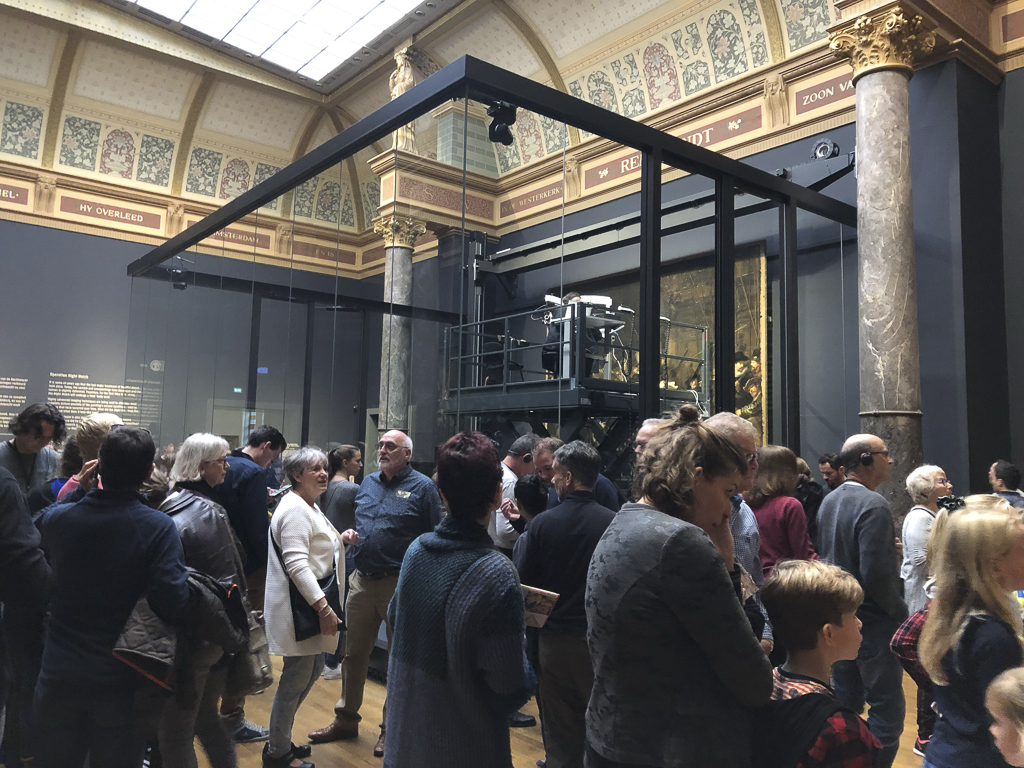
First, a little background on Rembrandt van Rijn’s largest work created in 1642 at the height of the Dutch Golden Age. Even though it is called “The Night Watch,” the official title of the piece is the not-so-short “Militia Company of District II under the Command of Captain Frans Banninck Cocq.” Not surprisingly the title was shortened in the later 1800s to “The Night Watch” because of the moody use of light and shadows, and the varnish which had darkened with age. In 1940, the varnish was cleaned and daylight let in (so to speak). Many wonder if the title shouldn’t be changed to “The Day Watch” as the men are setting off to do their duty of protecting the city.
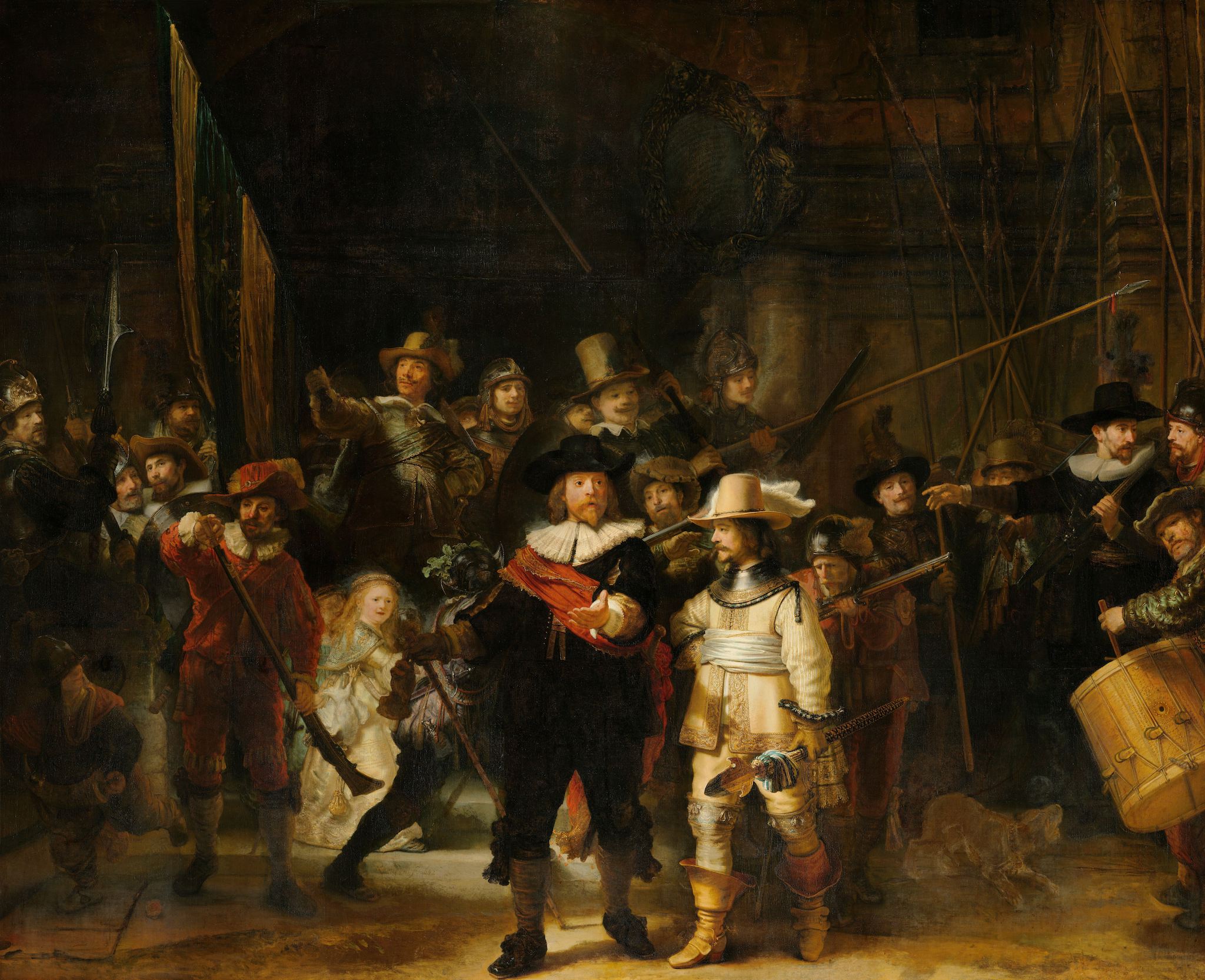
Commissioned by eighteen members of one of Amsterdam’s civic guard militias for their lodge where they practiced shooting, the painting features thirty-four Kloveniers (Kloveniersdoelen). The members of this militia were known as arquebusiers (soldiers armed with long guns) or musketeers. The eighteen sponsors were pictured in the painting and their names later added to a shield in the upper part of the painting by another artist. The original painting was actually much larger than we see today (it is now approximately 12 by 14 feet). When it was moved in the 1700s from the lodge to Amsterdam’s City Hall, it was trimmed down (I’m sure that action gives art historians heartburn), removing a few figures on the left and an arch near the top. We know this because surviving copies were painted showing the entire piece.
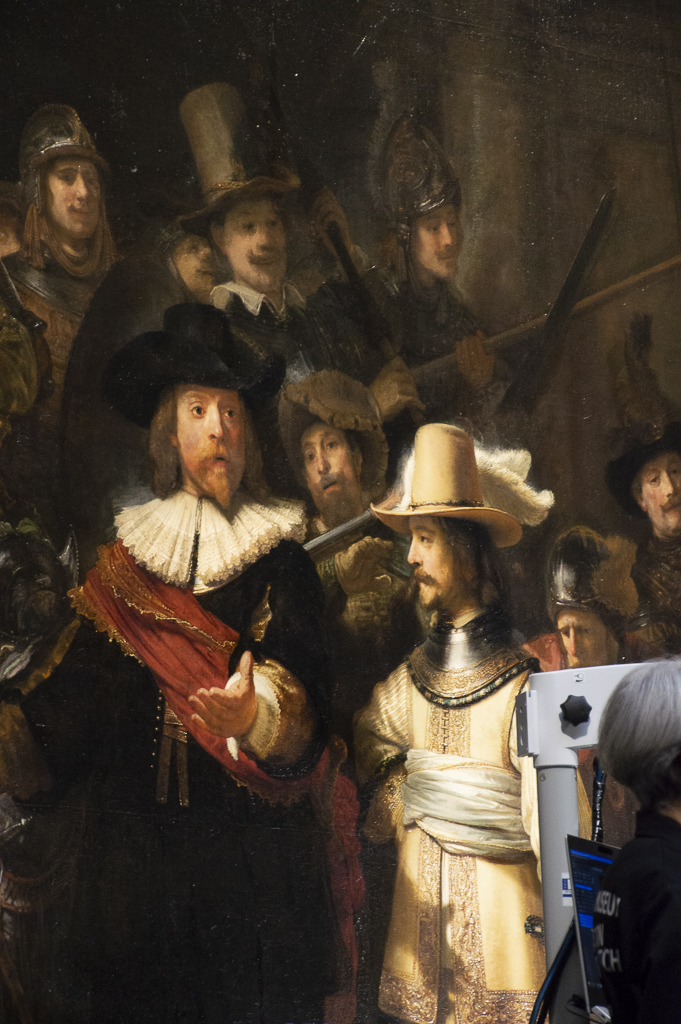
Usually these type paintings were staid with members sitting at a long table or standing. Rembrandt took a different approach and created a fluid orchestration with muskets being loaded, a dog barking, drums sounding, and members chatting. He even added a young girl (the company mascot), with a dead chicken at her waist (a symbol of the Kloveniers). Also, a close study of the painting revealed a man peeking over a soldier’s shoulder (both the chicken and the peeking man can be seen in the photo below). It is thought to be Rembrandt sneaking in a self-portrait.
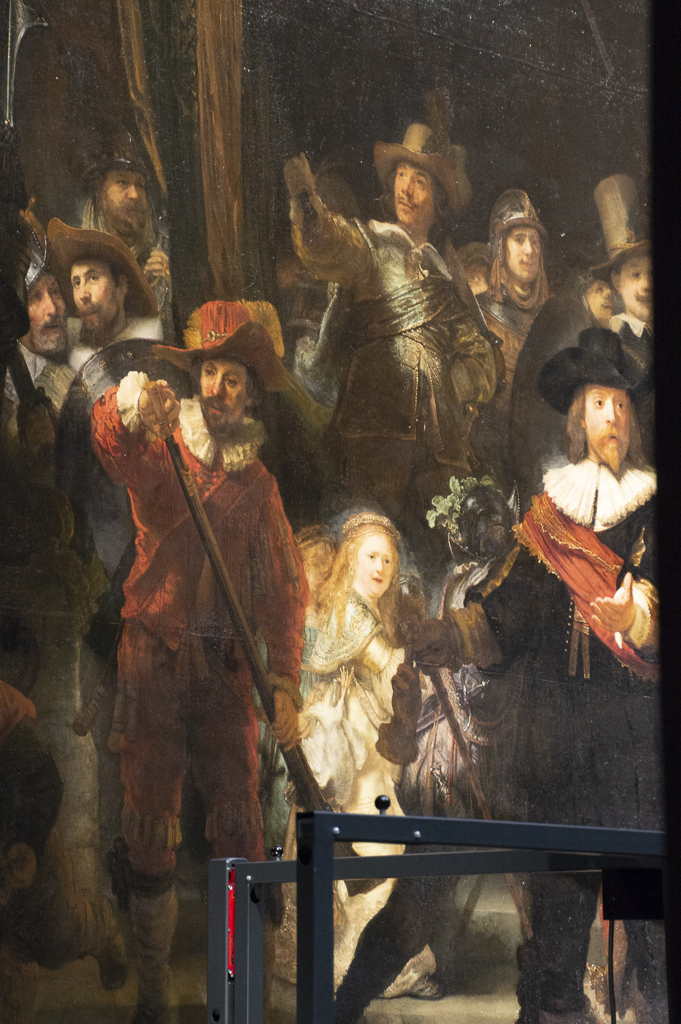
Now, back to the reason for the glass enclosure around the painting. The painting has undergone restoration in the past to clean the varnish and also to repair attacks upon it. Sulfuric acid was sprayed on it, and in 1973 someone severely slashed the painting. Those marks can still be seen as restoration could not completely heal the scars. A museum placard claims the last restoration happened over forty years ago (after that slashing?). Since then, the varnish and overpaintings have discolored again, and the canvas is now slightly deformed. This time the museum is using advanced imaging techniques to obtain a complete picture of the painting’s overall condition and they are studying Rembrandt’s techniques. Once that is done, I assume they will proceed with restoration.
The equipment we see on a moveable platform in the enclosure does stereomicroscopy. The platform moves up and down so every inch of the painting can be meticulously and microscopically studied with a microscope and computer. (Museum placard: The stereomicroscope has two lenses, one for each eye, to give the image depth. It magnifies the image about 6 to 50 times. Attached to the microscope is a camera, with which photos are taken of the highly magnified image.) I’ve included a few photos of the platform and the technicians/restorers working on the painting.
They were filming while I was there, so somewhere down the road I suspect there will be a documentary on the restoration.
Perhaps soon museum goers will once again walk the grand room and look through the arch to see “The Night Watch” once again clearly and freshly framed on the end wall. Now only people and equipment are visible.
Stay tuned for a fun surprise I discovered after visiting Rembrandt’s house. The Night Watch has been reproduced in sculpture and sits outside in a park. Watch for a later post with photos.


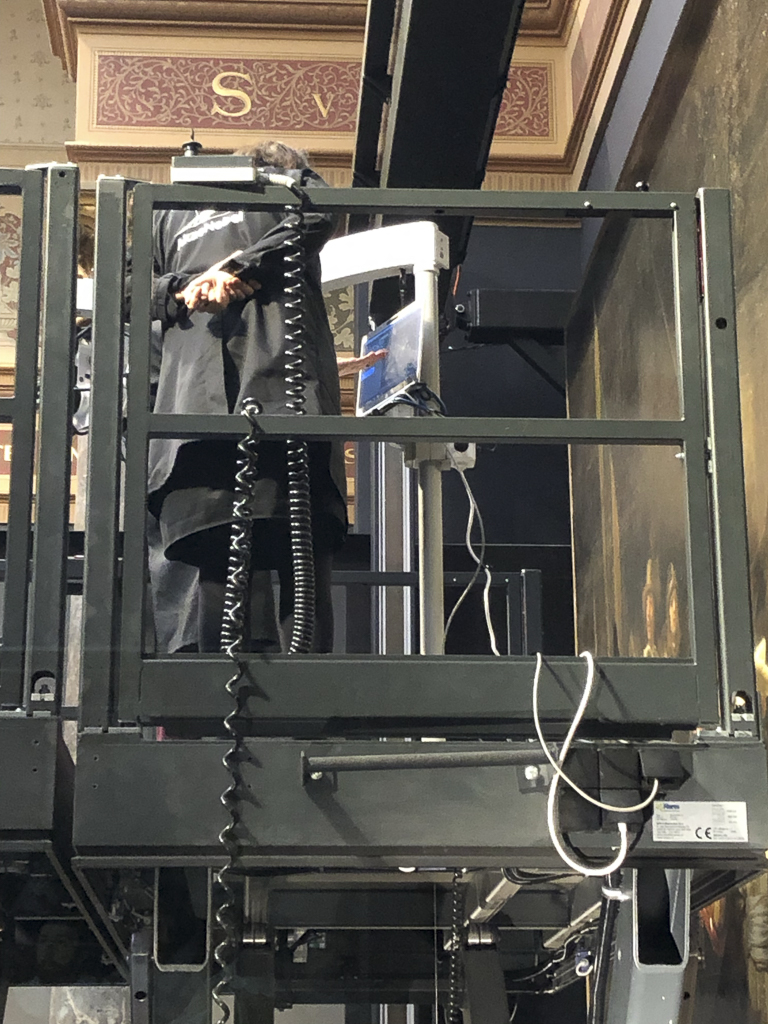
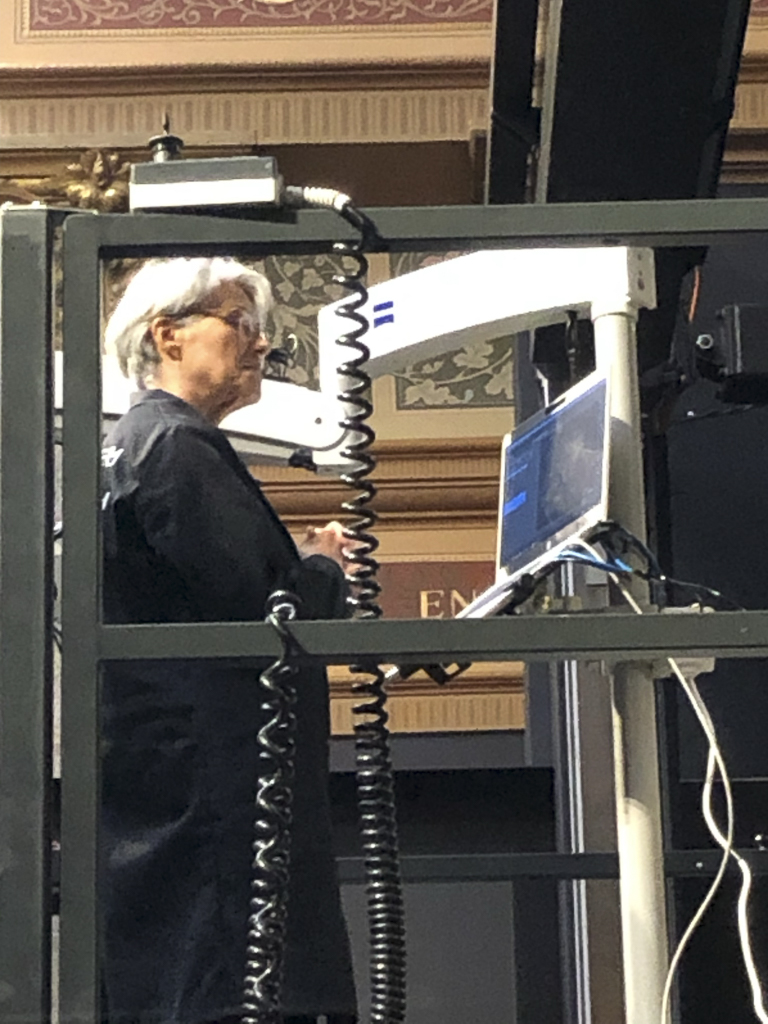
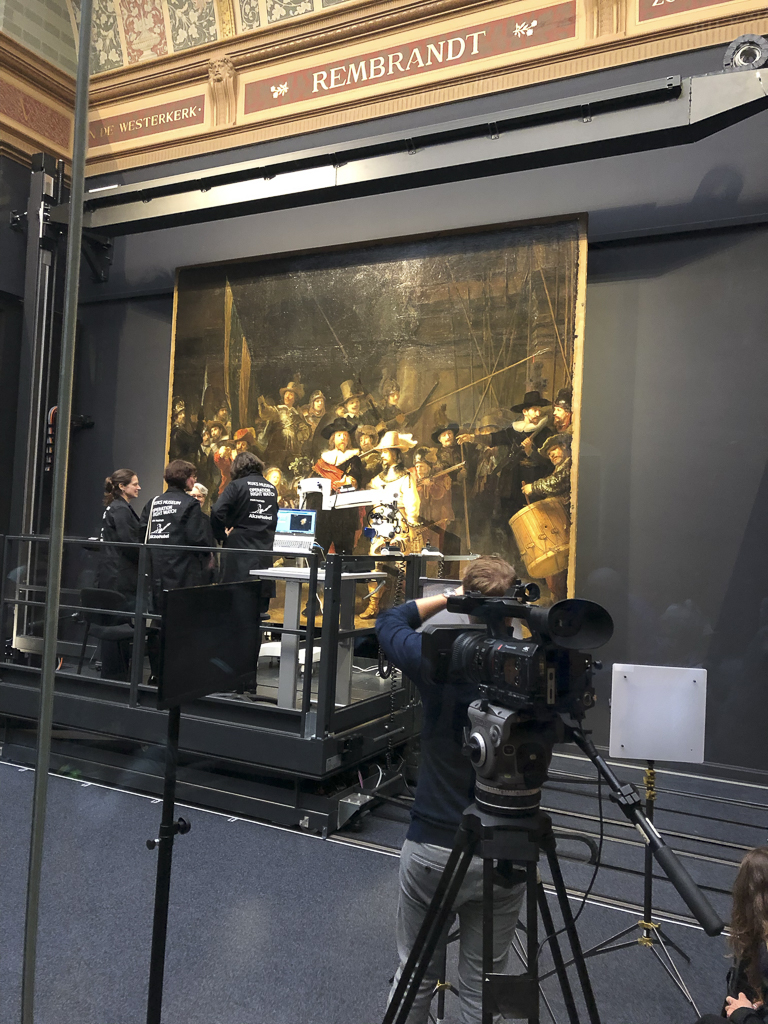
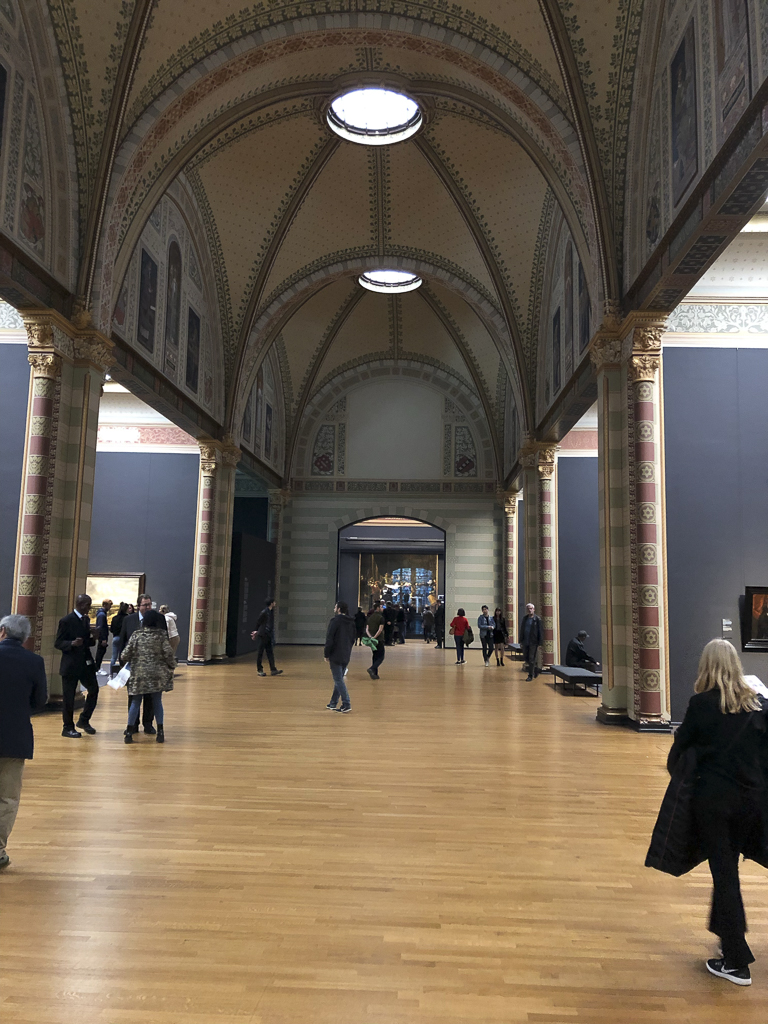
Leave a Reply